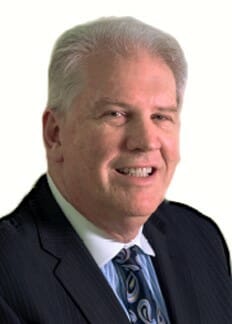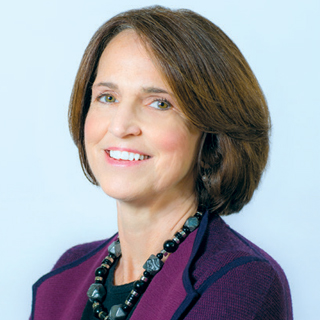

Nursing home operators were already bracing late Thursday for the fallout of a nationwide staff vaccine mandate, just hours after the Supreme Court ruled a Centers for Medicare & Medicaid Services rule affecting more than 10 million healthcare workers may proceed.
The Court’s 5-4 decision Thursday afternoon lifted two injunctions blocking the mandate. The rule requiring vaccination against COVID-19 was announced on Nov. 5. and immediately challenged by states claiming the federal government was overreaching its authority. The injunctions placed the rule on hold in 24 states for several weeks.
In a statement Thursday night, CMS Administrator Chiquita Brooks-LaSure said the agency was “extremely pleased the Supreme Court recognized CMS’ authority to set a consistent COVID-19 vaccination standard for workers.”
“Today’s decision will enable us to fully implement this rule, and we look forward to working with healthcare providers and their workers to protect patients,” she said. “We will continue our extensive outreach and assistance efforts encouraging individuals working in healthcare to get vaccinated.”
Pandemic exigencies
The court’s majority signaled its belief that previous conditions of participation, including rules on infection control, laid important groundwork establishing the secretary of health’s authority to issue the vaccine rule. The Court also seemed to be swayed that the typical procedural grounds of rule-making “yielded to the exigencies of the pandemic,” said Chris Puri, a long-term care attorney with Bradley Arant Boult Cummings LLP who also represents the Tennessee Health Care Association.
“The challenges posed by a global pandemic do not allow a federal agency to exercise power that Congress has not conferred upon it,” the majority wrote in its unsigned order. “At the same time, such unprecedented circumstances provide no grounds for limiting the exercise of authorities the agency has long been recognized to have.”
OSHA rule blocked
The High Court also voted 6-3 Thursday to stay, or block, a rule from the Occupational Safety and Health Administration requiring workers at large employers to be vaccinated or get tested regularly. It would not have threatened nursing homes’ core Medicare and Medicaid funding streams, but it still figured to have a profound effect due to various other business relationships.
That rule is being watched closely by other long-term care and senior care providers. It, unlike the CMS mandate, would allow for a test-out option for those not getting vaccinated.

In that case, Mark E. Reagan, managing shareholder for Hooper, Lundy & Bookman, PC, said the court determined the rule exceeded the labor secretary’s powers based upon its scope.
It found that “OSHA’s indiscriminate approach fails to account for this crucial distinction — between occupational risk and risk more generally — and accordingly the mandate takes on the character of a general public health measure, rather than an ‘occupational safety or health standard,’” noted Reagan, who primarily represents trade associations and providers in the post-acute and long-term care profession.
What happens next
In a Dec. 28 CMS memo guiding compliance in 25 states not covered by the now-lifted injunctions, the agency laid out new deadlines and targets for the mandate. Workers must have at least one shot by Jan. 27, and a second shot (if applicable) by Feb. 28.
CMS said Thursday night the ruling did not change the compliance timelines for providers in those states. It said healthcare providers in states covered by the decision will now need to establish plans and procedures to ensure their staff are vaccinated and to have their employees receive at least the first dose of a COVID-19 vaccine.
It was unclear, however, how or when CMS would extend its existing guidance to remaining states. Some experts believe it is possible that a delay similar to the one put into place by the interim final rule for previously unaffected states could be brought into play for those remaining. That amounted to an approximate 10-week delay in implementation dates.

Facilities with less than 100% vaccination coverage may face removal from the Medicare or Medicare Medicaid programs under the CMS mandate. The agency has previously said, however, that it would pursue other enforcement measures first. It also has said it will provide 30-day and 60-day grace periods to providers that get shots to more than 80% of staff by the first deadline.
“The bottom line is that vaccine requirements work and are an important tool to protect patients – and also to keep our health care workers healthy,” Brooks-LaSure said in a statement. “We’ve already seen many health care providers successfully implement requirements for their staff.”
Number inching up
Nationwide, 80.3% of nursing home workers had been fully vaccinated as of Jan. 2, according to the latest CMS data available.
We continue to ask that CMS and state surveyors show leniency during this critical time.
Mark parkinson, AHCA
Mark Parkinson, president and CEO of the American Health Care Association/National Center for Assisted Living put that figure at 83% Thursday but said forcing higher targets on operators could be “devastating to an already decimated long-term care workforce.”
“When we are in the midst of another COVID surge, caregivers in vaccine-hesitant communities may walk off the job because of this policy, further threatening access to care for thousands of our nation’s seniors,” he said. “We continue to ask that CMS and state surveyors show leniency during this critical time as well as consider a regular testing option for unvaccinated staff members to prevent worsening staff shortages.
“Rampant misinformation has sowed doubt and concern among many on the frontlines. We must collectively address the root cause of vaccine hesitancy rather than penalize providers who are making valiant efforts,” he added.
Will they really leave?
Lawyers who contested the mandate on behalf of 24 states told the court during oral arguments Jan. 7 that providers in rural areas are particularly unprepared to get to 100%.
Some providers have said the vaccine stipulation could result in massive employee losses and force closures due to already historic staffing shortages. A McKnight’s Long-Term Care News survey in late December found 75% of U.S. nursing homes restricted admissions due to staffing shortages or related pandemic issues in 2021.

“Vaccines and boosters are the most powerful tools we have in the battle against Covid-19; they save lives,” Katie Smith Sloan, president and CEO of LeadingAge, said after the court’s announcement Thursday. “While mandates can sometimes make it harder for employers to keep or find qualified workers — especially as omicron surges and workforce challenges are growing — we encourage all members, regardless of care setting or community type, to ensure staff get vaccinated.”
During oral arguments, a lawyer for the Biden administration said government inquiries showed most employees have not followed through with threats to quit when shots have been mandated by companies in the past, either against influenza or during the current pandemic. Sloan said a recent poll of her nonprofit members revealed “the vast majority are ready to move forward on the CMS healthcare worker mandates.”
More challenges — from both sides
The two separate court challenges to the mandate remain. Thursday’s ruling addressed the injunctions temporarily exempting providers in 24 states from vaccination stipulations. It was not a ruling on the merits. Conflicting lower court rulings could bring either or both CMS cases back to the Supreme Court at a future date.
In an American Hospital Association blog post written after oral arguments Jan. 7, attorney Sean Marotta said the initial Supreme Court decision “will likely control the outcomes in those courts because the Supreme Court will express its view on whether the mandates are likely lawful.”
Chief Justice John G. Roberts Jr. and Justice Brett M. Kavanaugh joined the three liberal-leaning justices, Stephen G. Breyer, Sonia Sotomayor and Elena Kagan, in issuing the majority opinion that allows the CMS mandate to proceed.
In the OSHA case, only Breyer, Sotomayor and Kagan dissented, making it less likely that the Court would rule in favor of the rule’s merits in a full hearing.
But Aaron Goldstein, a labor and employment practice partner in the international law firm of Dorsey & Whitney LLP, said by criticizing the large-employer rule for being too broad, the court may be leaving “the door open for more-targeted regulations.”
“Where the virus poses a special danger because of the particular features of an employee’s job or workplace, targeted regulations are plainly permissible,” the majority wrote. “We do not doubt, for example, that OSHA could regulate researchers who work with the COVID–19 virus. So too could OSHA regulate risks associated with working in particularly crowded or cramped environments.”
The majority in the OSHA order criticized the fact that under that rule “most lifeguards and linemen (would) face the same regulations as do medics and meatpackers,” Goldstein noted, the implication being that jobs typically conducted in open air or at a distance from others are generally considered safer from coronavirus transmission.
“Companies should expect to see more targeted rules coming from OSHA in the near future, designed to fit through this opening,” Goldstein added. “Likely candidates for regulation include workplaces where social distancing is difficult, such as manufacturing lines, or where mask wearing is impossible, such as restaurants. In contrast, OSHA will be less likely to try to impose a vaccine mandate upon workplaces where employees are able to socially distance and wear PPE, or where work is done outdoors. “




